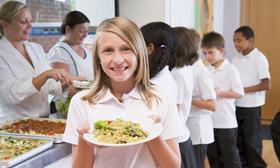While most parents are worried about what gets into kids' heads during a typical school day, some are also becoming increasingly concerned about what goes into their stomachs during lunch breaks as well.
Fortunately, national organizations like the School Nutrition Association are researching and providing information on school lunch programs across the country. Each year, the School Nutrition Association chooses one school district as the example for other school lunch programs, both in terms of nutrition and taste. This year, the honor goes to Fairfax County in Virginia, according to a recent report in the Washington Post.
What Does a Healthy School Lunch Look Like?
There are many factors that go into assessing what a healthy school lunch looks like, according to HealthSchoolLunches.org. This organization, founded by the Physicians Committee for Responsible Medicine, has issued a number of recommended changes that they would like to see in school lunch programs, including:
- Offer vegan or vegetarian dishes daily as an option to other school lunch fare.
- Meet the nutritional needs of all children, including those that are lactose-intolerant, by offering calcium-rich, nondairy beverages at all meals.
- Include a variety of vegetable dishes, as well as fresh and dried fruits.
- Provide programs to teach healthy eating principles to food service staff, parents and students.
In addition to these criteria, the School Nutrition Association also looks at the financial and program management of a school district when determining the award recipients for the year.
Fairfax


















